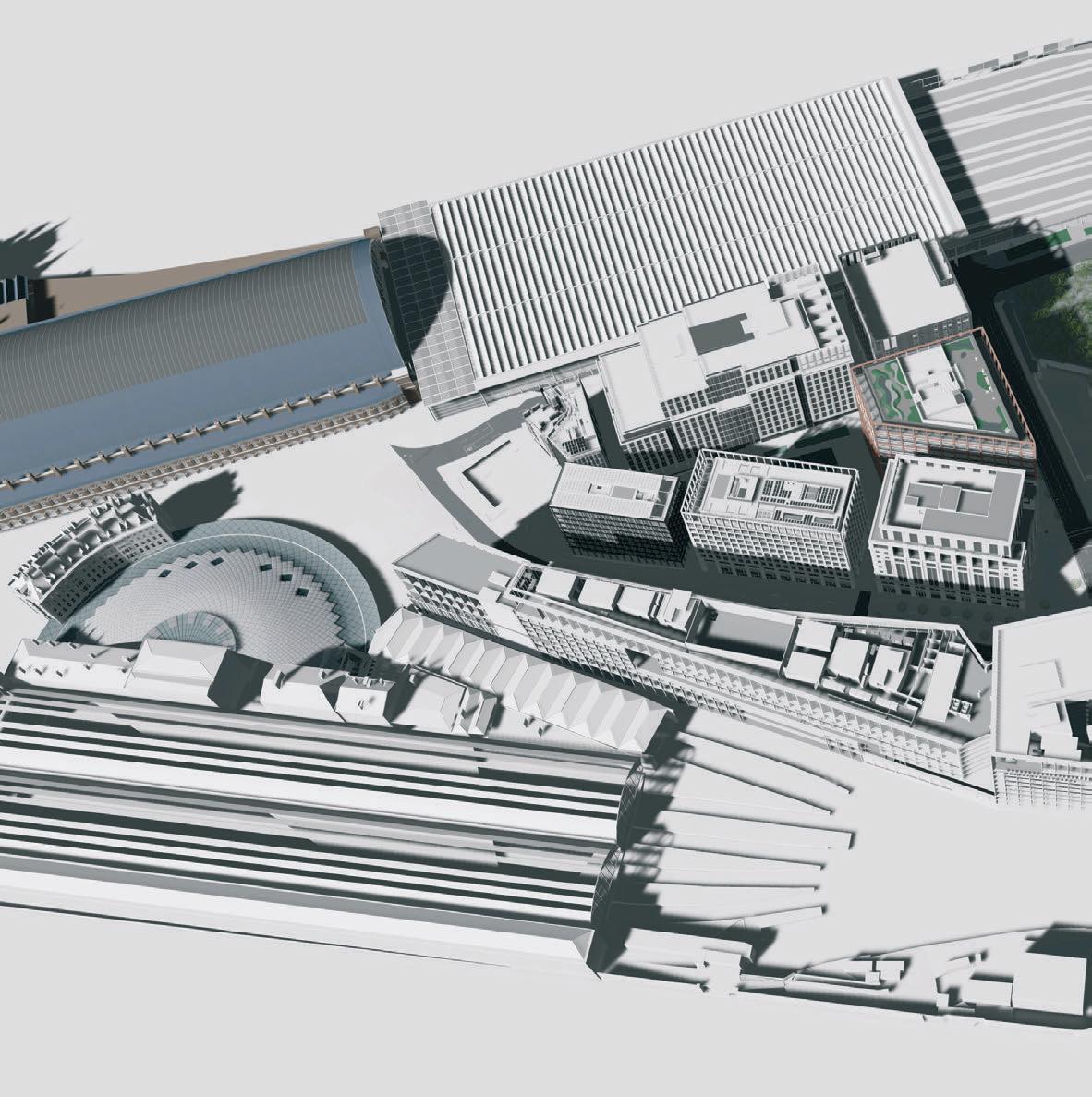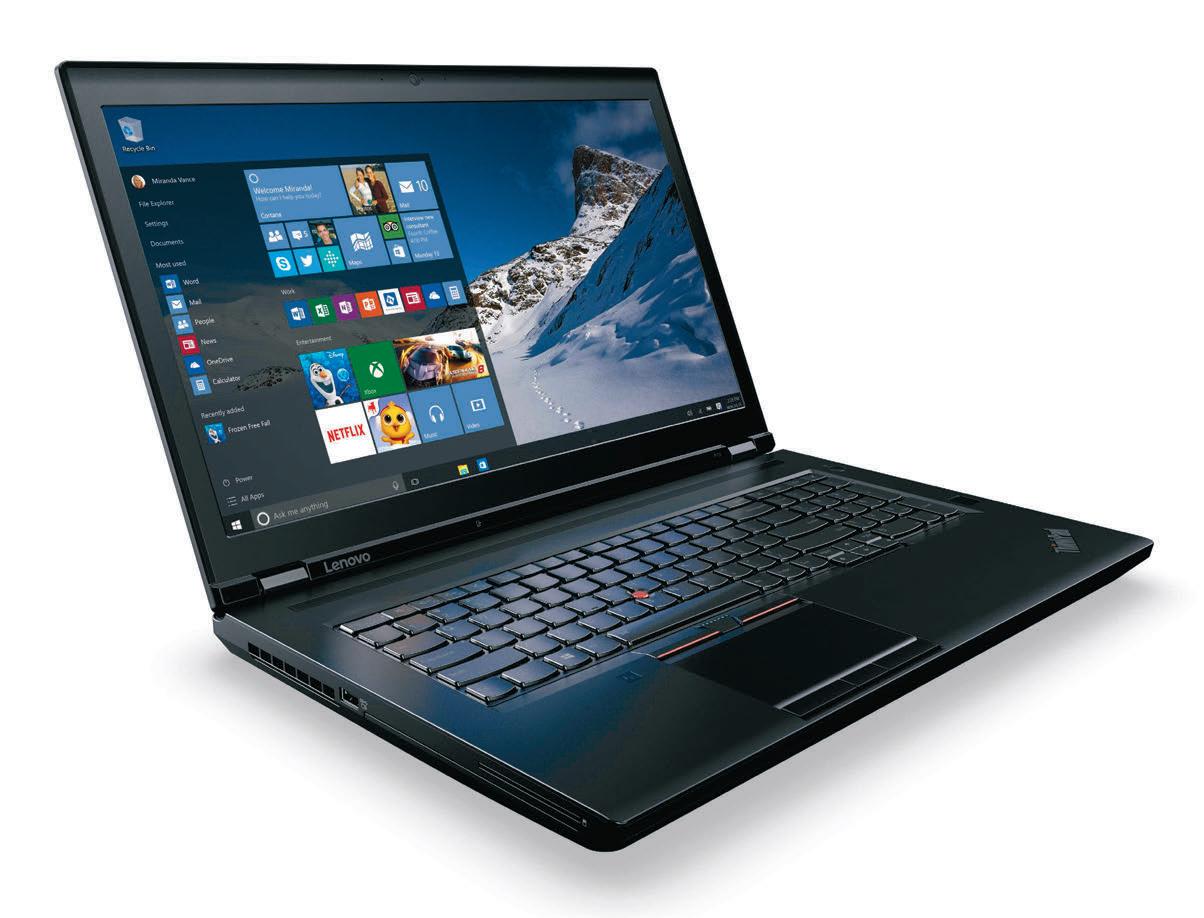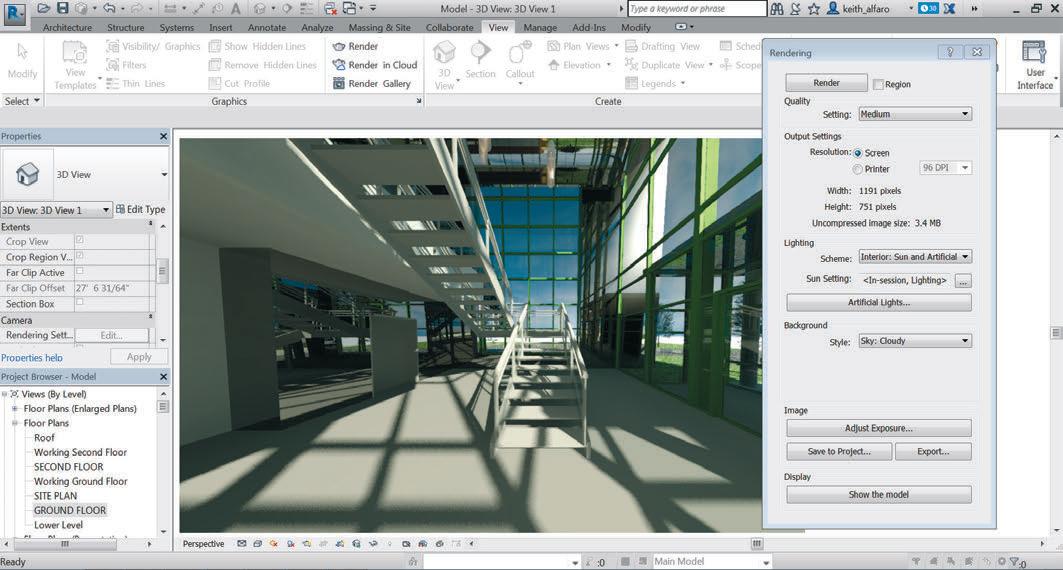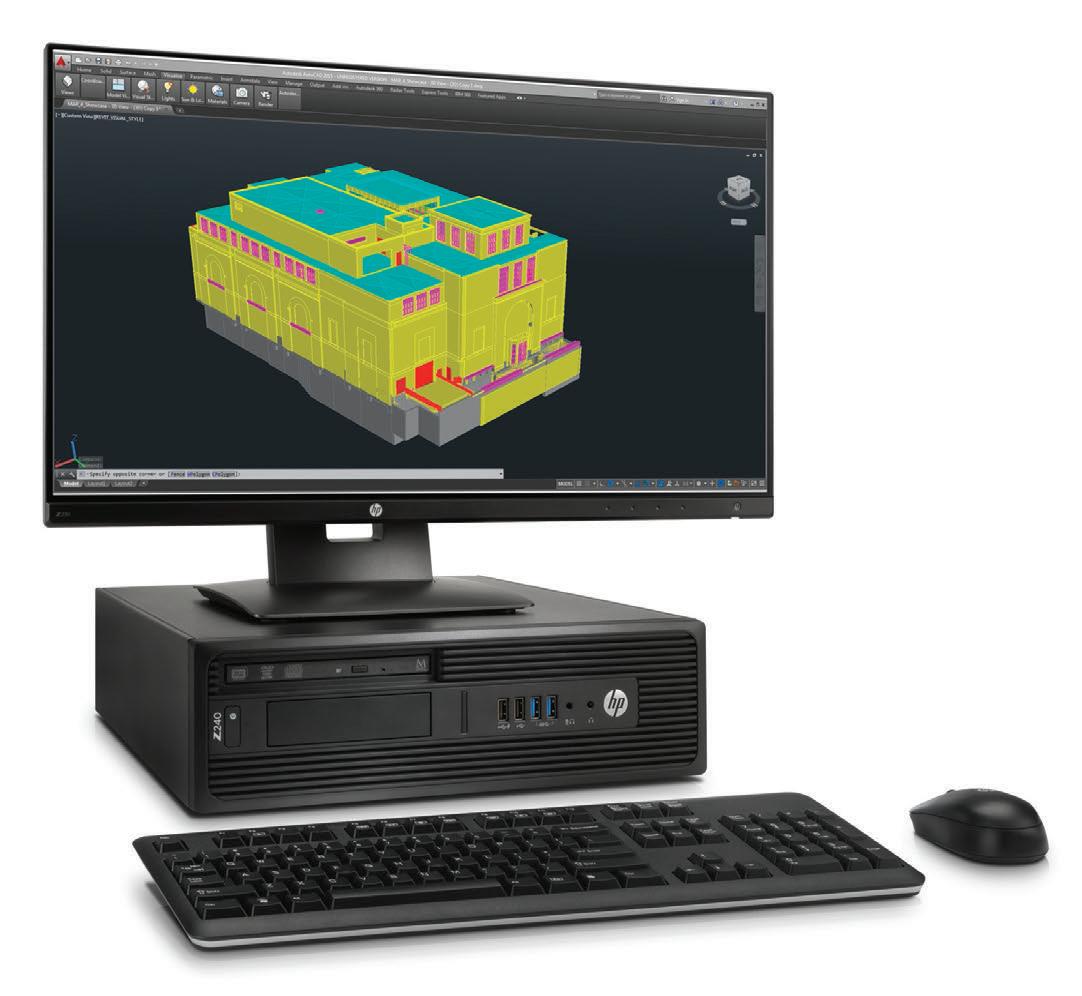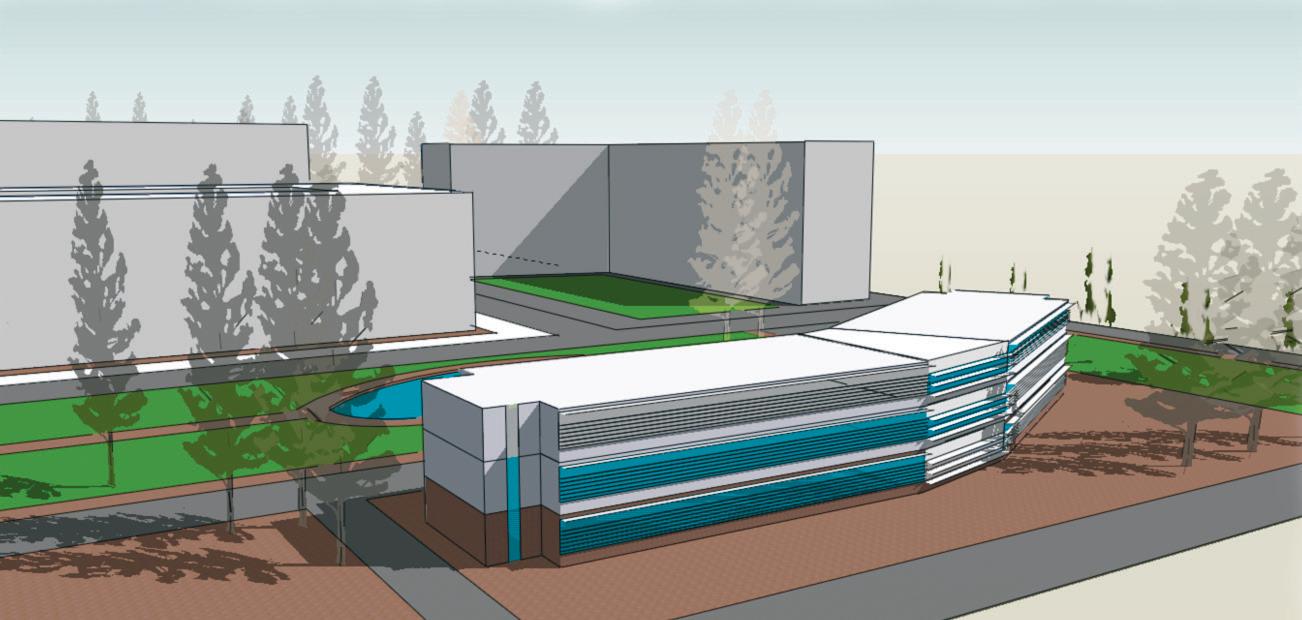
8 minute read
Studio
HP ZBook Studio
HP’s new ultra-portable laptop boasts a no-compromise quad core CPU but, for 3D CAD, the display needs to be carefully matched to the GPU
Dell re-wrote the mobile workstation rulebook when it launched the Precision M3800 in late 2013. With a powerful quad core CPU, capable professional GPU and a stylish, slimline 1.9kg chassis, the 15-inch CAD-class laptop was like nothing that had come before.
At the time, HP was selling the now-discontinued ZBook 14. This 14-inch mobile workstation was exceedingly portable, with superb battery life, but it was worlds apart from the M3800 when it came to performance. With a dual core low-voltage CPU and basic pro 3D graphics, this so-called workstation Ultrabook was only intended for very entry-level 3D CAD.
HP has been playing catch-up ever since and, in Spring 2015, looked like it had earmarked a gaming laptop derivative to be its M3800 killer. But the HP OMEN Pro mobile workstation turned out to be a stopgap solution, hastily brought to market to seal a large deal with a major engineering customer.
Now, with the ZBook Studio, HP has finally delivered a mobile workstation to go head to head with the Dell Precision M3800 (or more accurately, its replacement, the Dell Precision 5510).
With a quad core CPU, mid-range GPU, NVMe PCI storage, security and docking station, this slimlime laptop not only has the performance but also the enterprise features that were lacking in the OMEN Pro.
HP pitches the ZBook Studio as the world’s first quad core workstation Ultrabook.
The quad core CPU is not only good for CAD but also gives it good acceleration in multi-threaded applications such as ray trace rendering.
The machine gets its Ultrabook status by meeting a number of criteria set by Intel for ultra-portable laptops, the most prominent being thickness, fast storage (SSD) and good battery life. But this doesn’t mean compromises have been made by offering slower clock speed CPUs. In fact, the ZBook Studio features the exact same 45W quad core processors found in the HP ZBook 15 ‘desktop replacement’.
Models include the Intel Core i7-6700HQ (2.6GHz up to 3.5GHz); Intel Core i7-6820HQ (2.7GHz up workflows dictated. to 3.6GHz); Intel Xeon Product spec With our HP ZBook Studio’s E3-1505M v5 (2.8GHz up to ■ Intel Xeon 4K IPS display, however, we 3.7Ghz); and the Intel Xeon E3-1505M v5 (2.8GHz, would be less inclined to do E3-1545M v5 (2.9GHz up to Turbo to 3.7Ghz) (Quad Core) CPU this. The image wasn’t sharp in 3.8GHz). ■ 32GB (2 x 16GB) HD, much like you’d expect at
Considering how thin and DDR4 ECC SODIMM any non-native resolution. light the ZBook Studio is, 2133MHz memory The good news is that the HP having this class of CPU is ■ 512GB HP Z Turbo Drive (NVMe ZBook Studio can also be fitted mightily impressive. Our test PCIe SSD) with standard and touchmachine’s Intel Xeon E3-1505M v5 made light ■ Nvidia Quadro M1000M GPU (4GB GDDR5) enabled FHD panels and a 4K Dreamcolor panel that may or work of our number-crunch- (354.61 driver) may not render perfectly at HD ing benchmarks. Indeed, in ■ 15.6-inch antiglare LED resolutions. 3ds Max (ray trace render- backlit display: The Studio’s internal storage ing), it was less than 20% UHD (3,840 x 2,160) is all about performance, with slower than the desktop Intel ■ Quadro M1000M GPU (4GB GDDR5) HP standardising on one or two Xeon E3-1270 v5 (3.6GHz up (354.61 driver) M.2 NVMe Solid State Drives to 4.0GHz) that powered the ■ Microsoft (SSDs). While these Samsung HP Z240 Tower we reviewed Windows 10 Pro 64 SM951 SSDs (branded as the in January 2016. ■ 375 (w) x 255 (d) x 18 mm (h) mm HP Z Turbo Drive) are great for
With 32GB of Error ■ From 2kg moving big files around Correcting Code (ECC) or ■ Limited 3/3/3 quickly, CAD users with non-ECC memory spread across two 16GB SODIMMs, warranty: 3 years parts, 3 years labour, and 3 years onsite massive datasets may be a little disappointed that there is no the Studio has more than service) room for a 2.5-inch hard disk enough capacity for most ■ £2,100 + VAT drive (HDD), as Dell offers in CAD workflows. Non-ECC hp.co.uk its Precision 5510. memory will be fine for most Standardising on tiny M.2 users, but ECC memory (which can only form factor SSDs obviously helps keep be matched with the new Xeon CPUs) down weight and size and while this isn’t could be useful to protect against crashes a problem if your storage requirements during long rendering runs. are moderate, it does mean that price per
The Studio also packs in a respectable GB is high and capacity is currently GPU, in the form of the Nvidia Quadro limited to 1TB (2 x 512GB drives). M1000M. A step up from Nvidia’s true 1TB HP Z Turbo Drives are coming entry-level GPU, the Quadro M600M, soon, but these will likely cost in the this special edition graphics processor region of £400 to £500. With 1TB 2.5with 4GB of memory (instead of the usual inch HDDs available for under £100, 2GB) should offer plenty for most CAD there’s a big difference here. users – at least when using HD resolution Of course, when it comes to perfordisplays, that is. Unfortunately, the same mance, the HP Z Turbo Drive wins hands isn’t always true at higher resolutions and down, with our single 512GB SSD contribwe sometimes found the M1000M unable uting to an incredibly fast Windows 10 to keep up with the demands of our test boot time of 13 secs and heavyweight CAD machine’s 4K (3,840 x 2,160) panel. applications loading in under 10 secs.
With four times as many pixels as FHD The impressive 1,800MB/s read and (1,920 x 1,080), 4K displays can put a huge 1,250MB/sec write speeds achieved in additional load on the GPU when render- our AS-SSD benchmark will certainly ing interactive 3D graphics. While the benefit some workflows – think huge ZBook Studio still performed well at 4K in continuous datasets such as those used in some applications, including Revit, it stut- point cloud processing, simulation and tered in SolidWorks 2015, going up to 50% video editing – but you are less likely to slower than it did at HD resolution. see a benefit over SATA SSDs in standard
This 4K issue is not unique to the HP CAD workflows. ZBook Studio – we experienced a similar With such powerful components slowdown last year with the Dell Precision packed into a slimline chassis, the HP M3800. However, as the display image on ZBook Studio is a little prone to fan the Dell UltraSharp IGZO 4K panel still noise. In our tests, the machine seemed looked perfectly crisp at 1,920 x 1,080, we quite trigger-happy with its fans, which concluded that, to minimise the impact on kicked in even when the machine was 3D performance, we would be happy to performing relatively moderate swap between resolutions as and when processing tasks.
6
7 8
9
1 Audio in / out (microphone / headphone) 2 USB 3.0 port 3 HDMi port 4 2 x Thunderbolt 3 ports (USB-C connector) 5 Power connector 6 720p HD webcam 7 RJ-45 (Gigabit Ethernet) 8 2 x USB 3.0 ports (1 charging) 9 SD Card reader 10 Image sensor clickpad with on/off button, two-way scroll, gestures, two buttons 11 HP Fingerprint sensor
5 4 3 2
10 1
11
The resulting noise isn’t too distracting, but if you enjoy working in silence, this is an important consideration.
The chassis itself is sleek and stylish – a far cry from the chunky mobile workstations of old. At only 18mm thick and weighing 2kg, it slides effortlessly into a laptop bag. The slender 150W AC power adapter adds little to the bulk.
It’s not all about the form though: the Studio’s lightweight magnesium chassis feels solid and well built, the backlit keyboard and glass trackpad comfortable to use. Dedicated mute and airplane mode buttons are a welcome inclusion, though it’s a shame there’s no numeric keypad. An optional fingerprint sensor and several built-in security features will be important for enterprises.
There are plenty of connectivity ports, using the very latest technologies. Two Thunderbolt 3 ports on the right perform multiple roles, supporting USB 3.1 Gen2 and PCIe Gen 3 devices, as well as external displays via DisplayPort 1.2 over the USB-C port connector.
Older devices are not forgotten and there are three standard USB 3.0 ports (one always-on), Gigabit Ethernet and HDMi.
With Thunderbolt 3 boasting highbandwidth data transfer speeds (5 GB/sec), there’s no need for a dedicated docking port. With a single cable, the Studio can be connected to the new HP ZBook Dock for charging and simultaneous linking of up to ten devices through ports that include Thunderbolt 3, four USB 3.0, RJ-45 (Ethernet), VGA, combo audio and two additional DisplayPorts.
The wireless options are pretty standard with dual band 802.11 ac/a/b/g/n (2x2) WiFi and Bluetooth 4.0.
Previous generation ZBooks scored highly when it came to serviceability, thanks to an ‘HP Easy Access door’ on the underside of the machine. This impressive feature gave you ready access to key internal components, simply by removing a security screw and sliding off the door.
With its new generation ZBooks, HP has done away with the ‘door’ and all of its G3 machines require a Torx screwdriver to get inside. Apparently, this was done to reduce the thickness of the machines, which is a shame, but an understandable compromise. While there’ll always be customers who like to tinker, the majority probably prefer a more slender machine. And you can still get access to memory, storage and fans (for cleaning) simply by removing two panels and a total of 11 Torx screws.
Conclusion With the ZBook Studio, HP has produced an impressive mobile workstation that marries the performance and enterprise features of a modern CAD-class laptop with the portability of an Ultrabook.
The machine is incredibly advanced throughout, with many new technologies, but don’t be seduced by the beautiful 4K panel if it impacts performance in graphics-hungry 3D applications.
Overall, The ZBook Studio is an exceptional ultra-portable laptop for entry-level to mid-range CAD, with power in reserve for multi-threaded rendering apps. Slimline mobile workstations used to be about compromises, but while some may find the GPU underpowered, there’s little to separate the Studio from the larger HP ZBook 15. But with prices starting at £1,310 and our test machine coming in around £2,100, the HP ZBook Studio doesn’t come cheap.

